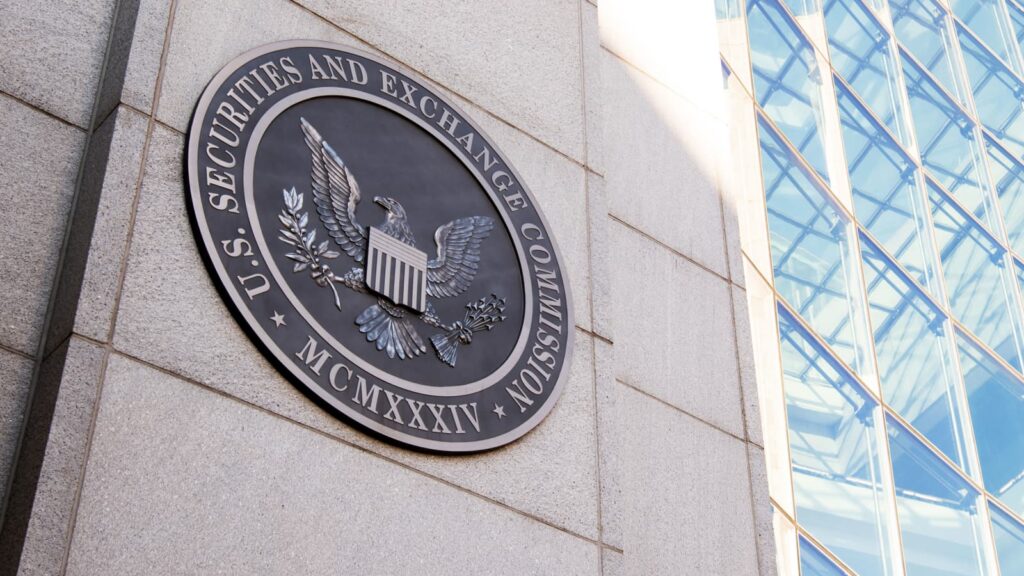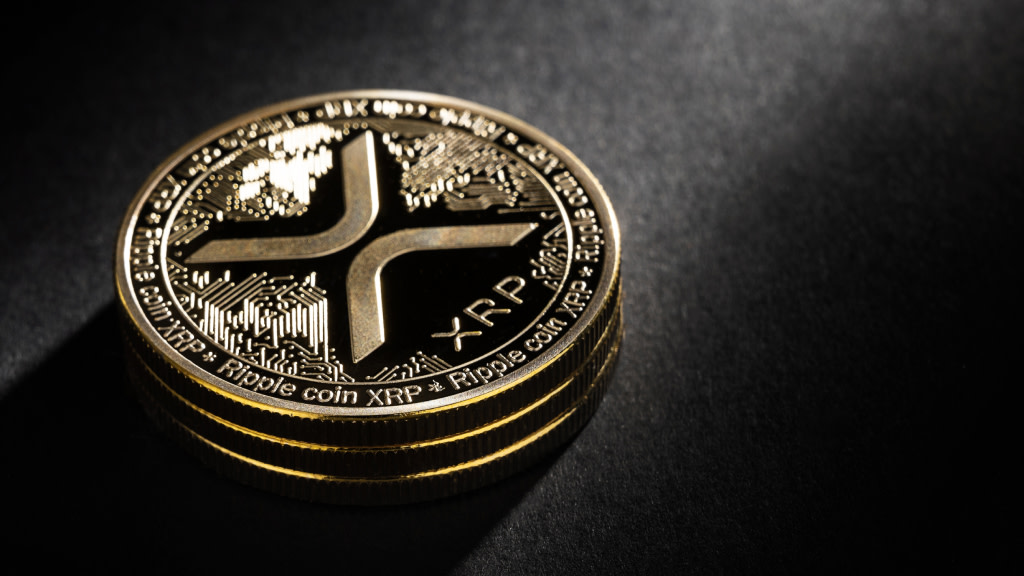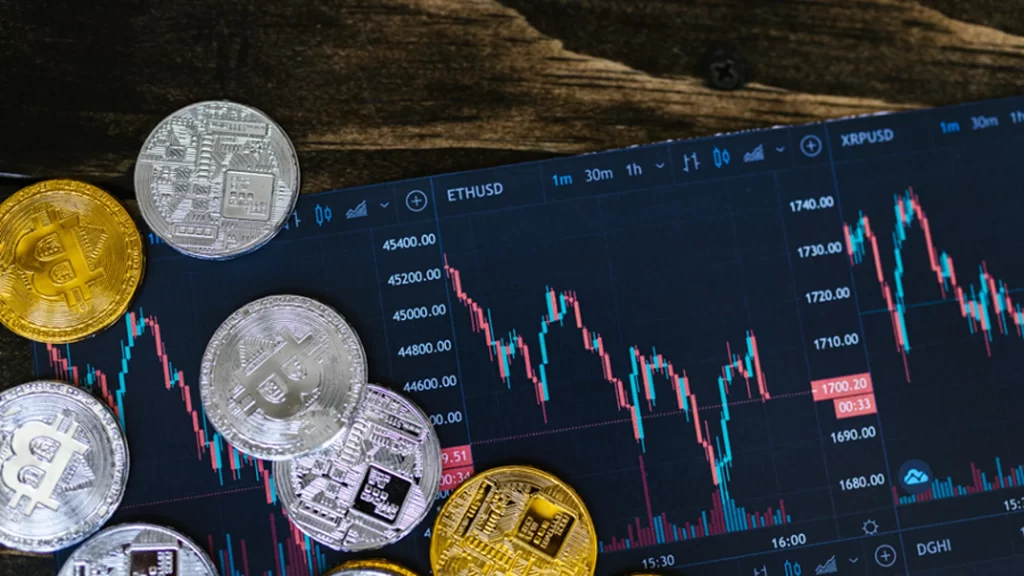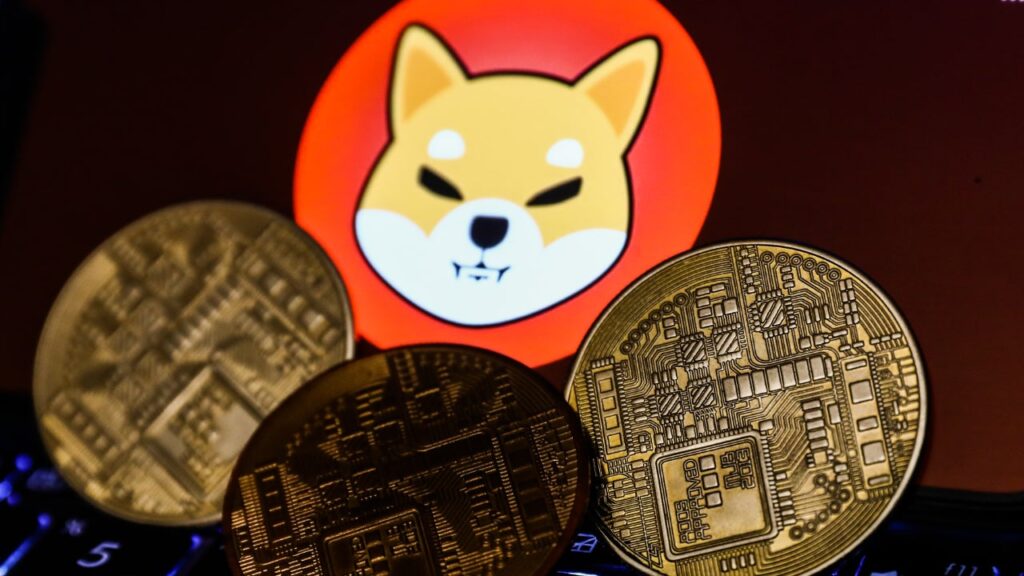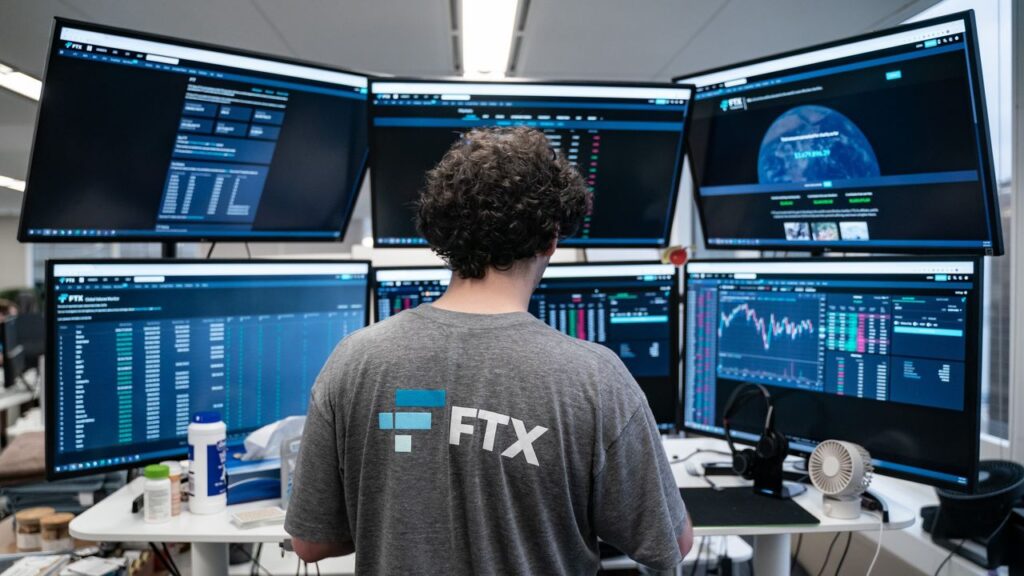As Bitcoin’s price experiences fluctuations, the cryptocurrency market is closely monitoring key support levels that could determine the next phase of its bull market. This week presents several factors that traders and investors should consider to assess Bitcoin’s trajectory.
Current Market Overview
Bitcoin recently surpassed the $100,000 mark, reaching an all-time high of $108,309 on December 17, 2024. However, it has since experienced volatility, with prices oscillating between $93,000 and $100,000. This movement has raised questions about the sustainability of the current bull market and the potential for further gains or corrections.
Historical Cycles Suggest Imminent Peak
Analyzing Bitcoin’s historical data reveals a pattern of cyclical peaks following significant rallies. If history repeats itself, Bitcoin could reach a new all-time high by January 17, 2025. This projection aligns with the typical duration from the first to the last record high observed in previous cycles. Such patterns are often influenced by Bitcoin’s four-year halving events, which reduce the supply of new coins and can impact price dynamics.
Potential Barriers to New Highs
Despite optimistic projections, several factors could impede Bitcoin’s ascent to new highs:
- Diminishing Halving Effects: The impact of halving events on Bitcoin’s price may be decreasing over time, potentially leading to less pronounced price increases.
- Market Sentiment: A softening in investor enthusiasm could result in reduced buying pressure, limiting upward momentum.
- Trading Volumes: Decreased trading activity may indicate lower market engagement, which can affect liquidity and price stability.
Technical Analysis Highlights Key Levels
From a technical standpoint, Bitcoin’s ability to maintain certain support levels is crucial for sustaining its bullish trend. A significant support level to watch is $91,500. A drop below this threshold could signal a deeper correction, potentially targeting the $73,400 range. Conversely, reclaiming and holding above the $100,000 mark could reinforce bullish sentiment and pave the way for further gains.
On-Chain Metrics and Network Activity
On-chain analysis provides additional insights into Bitcoin’s current state:
- Network Activity: A decline in active addresses and transaction volumes may suggest reduced user engagement, which can impact demand.
- Liquidity Indicators: Monitoring the flow of Bitcoin into and out of exchanges can offer clues about potential selling or buying pressure.
Macroeconomic Influences
External economic factors also play a role in Bitcoin’s price movements:
- Inflation Concerns: Rising inflation rates can drive investors toward assets like Bitcoin, perceived as hedges against currency devaluation.
- Regulatory Developments: Changes in cryptocurrency regulations, especially in major markets like the United States and China, can significantly impact investor confidence and market dynamics.
Conclusion
As Bitcoin navigates this critical juncture, a combination of historical patterns, technical indicators, on-chain metrics, and macroeconomic factors will influence its next move. Traders and investors should remain vigilant, keeping a close eye on key support levels and broader market conditions to make informed decisions in the coming days.
Rolls Royce’s share price has roughly tripled in the last 12 months (year to date.)
Rolls-Royce, a renowned name in the world of luxury automobiles and engineering excellence, is also a prominent player in the stock market. In this comprehensive article, we will delve into Rolls-Royce, exploring its historical share price performance, the factors that influence its stock price, and the potential future prospects of this iconic company.
Introduction to Rolls-Royce
Rolls-Royce Holdings plc is a British multinational company known for its exceptional engineering prowess in the aerospace, defense, and power systems industries. Founded in 1904, Rolls-Royce has established itself as a symbol of luxury and precision in the automotive world, while also contributing significantly to the advancement of aviation and industrial technologies.
Rolls Royce Share Price Performance
To gain a deeper understanding of Rolls-Royce’s current share price, it is essential to examine its historical performance. An analysis of its journey on the stock market can provide valuable insights into the stock’s behavior over time.
The Early Years (20th Century)
Rolls-Royce, having been founded more than a century ago, has a storied history in the stock market. The company’s shares were initially offered to the public in the early 20th century. During these early years, Rolls-Royce garnered a reputation for producing high-quality luxury automobiles and began expanding its reach into the aviation industry.
The Aerospace Expansion (Mid-20th Century)
Rolls-Royce’s foray into the aerospace sector, particularly in the design and manufacturing of aircraft engines, marked a significant turning point. The company’s shares experienced substantial growth as it established itself as a key player in the global aviation industry. Rolls-Royce engines powered numerous iconic aircraft, cementing its position as a leading aerospace company.
The Challenges (Late 20th Century – Early 21st Century)
While Rolls-Royce achieved great success in aerospace, it also faced challenges, including financial setbacks and corporate restructuring in the late 20th century. These challenges led to fluctuations in the company’s share price. The stock market’s response to these events reflected the complex nature of Rolls-Royce’s operations, which spanned both luxury automobiles and cutting-edge aerospace technology.
Factors Influencing Rolls-Royce’s Share Price
Rolls-Royce’s share price is influenced by various factors that investors and analysts closely monitor. These factors can significantly impact the stock’s performance:
1. Aerospace Demand
The demand for aircraft engines and related services is a primary driver of Rolls-Royce’s revenue. Fluctuations in the global aerospace market, including orders for new aircraft and maintenance contracts, can directly affect the company’s financial results and, consequently, its share price.
2. Geopolitical Factors
As an international company, Rolls-Royce is susceptible to geopolitical developments. Political tensions, trade disputes, and international conflicts can influence the company’s business operations, leading to changes in its stock price.
3. Technological Innovation
Rolls-Royce’s ability to innovate and develop cutting-edge aerospace and power systems technologies is a key determinant of its competitiveness. Investors closely watch the company’s investments in research and development, as breakthrough innovations can impact its share price positively.
4. Financial Performance
The company’s financial health, including revenue growth, profitability, and debt levels, is a critical factor in its share price performance. Strong financial results can attract investors and bolster the stock price.
5. Regulatory Environment
Rolls-Royce operates in highly regulated industries, particularly aerospace and defense. Changes in regulations, compliance requirements, and environmental standards can affect the company’s operations and profitability, influencing its share price.
READ: HE1 Share Price – 2024 Chart & Analysis
Future Prospects
As investors look ahead to the future of Rolls-Royce, several factors come into play, potentially shaping the company’s performance in the coming years.
1. Aerospace Recovery
The recovery of the global aerospace industry following the challenges posed by the COVID-19 pandemic will be a significant driver of Rolls-Royce’s performance. Increased air travel, aircraft orders, and maintenance contracts will have a direct impact on the company’s financial results.
2. Sustainability Initiatives
Rolls-Royce’s commitment to sustainability and environmental responsibility is becoming increasingly important. Investors are interested in the company’s efforts to develop eco-friendly technologies and reduce its carbon footprint, as these initiatives can attract environmentally-conscious investors.
3. Defense Contracts
Rolls-Royce’s participation in defense contracts and the demand for defense-related technologies will play a role in the company’s future growth. Defense spending by governments and international security trends can influence this aspect of the business.
4. Technological Advancements
Investors will closely monitor Rolls-Royce’s technological advancements, especially in areas such as electric propulsion and autonomous systems. The company’s ability to stay at the forefront of innovation can impact its long-term competitiveness.
Conclusion
In conclusion, Rolls-Royce’s journey on the stock market is characterized by a rich history and a legacy of engineering excellence. The stock’s historical performance reflects the intricate blend of luxury automobiles and cutting-edge aerospace technology that defines the company’s identity.
Investors in Rolls-Royce should remain vigilant, considering the myriad of factors that influence its share price, from aerospace demand and geopolitical events to technological innovation and regulatory changes. While the company has faced challenges in the past, its position as a leader in aerospace and power systems, coupled with its commitment to sustainability and innovation, positions it for potential growth in the future.
As Rolls-Royce continues to navigate the complex landscape of global industries, its story remains one of fascination and potential. Investors, both seasoned and new, will watch closely to see how this iconic company evolves in the years to come.
Despite facing criminal allegations and concerns about its financial reserves, the Seychelles-based cryptocurrency exchange KuCoin has been deemed “fine” by Ki Young Ju, the CEO of the crypto analytics firm CryptoQuant.
Ju’s endorsement comes amidst user worries over KuCoin’s ability to fulfill withdrawal requests, particularly in light of recent surges in Bitcoin (BTC) and Ethereum (ETH) withdrawals.
Ju observed that these withdrawals, mainly initiated by retail users, had little impact on KuCoin’s overall reserves.
He assured on X, “They appear to not commingle customers’ funds and have sufficient reserves to process user withdrawals,” suggesting from an on-chain analysis that the exchange is stable.
KuCoin’s financial health appears robust, with Scopescan data revealing its total portfolio balance across multiple blockchain networks is valued at $4.889 billion.
This reassurance occurs as the United States Department of Justice leveled allegations against KuCoin’s founders, Chun Gan and Ke Tang, on March 26.
The accusations included a failure to establish an Anti-Money Laundering program and concerns that the platform facilitated “money laundering and terrorist financing.”
Ju also highlighted a key operational difference between KuCoin and the collapsed crypto exchange FTX, pointing out KuCoin’s practice of not mixing customer funds with its own reserves.
READ MORE: Bitcoin Surges Past $71,000 as Whales Accumulate, Pre-Halving Dip Possibly Over
This operational integrity is crucial for user trust, especially when legal issues or reserve status concerns prompt investors to withdraw their assets from exchanges.
The crypto community vividly recalls the rapid withdrawal of funds from FTX following a loss of confidence, triggered by a tweet from Binance’s former CEO, Changpeng “CZ” Zhao, concerning FTX’s native FTT token.
The broader implications of reserve concerns at large exchanges like KuCoin extend beyond their user base, potentially leading to market-wide repercussions.
However, despite the serious nature of the allegations against KuCoin’s founders, the cryptocurrency market’s response has been relatively muted.
The Crypto Fear & Greed Index, a measure of market sentiment, indicates an “extreme level of greed” with a score of 83, suggesting that the wider crypto market remains largely unfazed by the developments surrounding KuCoin.
To submit a crypto press release (PR), send an email to sales@cryptointelligence.co.uk.
The XRPL blockchain, foundational to Ripple’s operations, is poised to revolutionize decentralized finance (DeFi) with its newly launched automated market maker (AMM) protocol, XLS-30.
This development, a collaborative effort with the XRPL community, is designed to enrich the blockchain’s ecosystem significantly.
Ripple‘s announcement of the XLS-30 AMM protocol marks a pivotal expansion in the XRPL ecosystem’s DeFi capabilities, facilitating cross-chain DeFi applications across 50 blockchain platforms.
This innovation aims to complement XRPL’s existing decentralized exchange (DEX), which primarily operates on a traditional order book model lacking the advancements seen in newer DeFi protocols.
A Ripple spokesperson highlighted to Cointelegraph that the AMM is a foundational step towards broader DeFi developments on the XRPL blockchain.
Furthermore, integrating with cross-chain messaging services like Axelar is expected to extend XRPL-based DeFi solutions’ reach and utility across various blockchain ecosystems.
Ripple CTO and XRPL co-founder David Schwartz has shared insights on the AMM’s development journey since June 2022, emphasizing its role in enhancing the DEX’s order book system.
This integration is anticipated to offer optimal pricing by merging AMM and order book systems, while also providing liquidity providers with yield opportunities on their idle assets.
The introduction of liquidity pools for any asset pair issued on XRPL by the AMM aims at a broader user base, including high-volume traders and firms, despite not being specifically designed for institutional traders.
The lack of built-in compliance features in the AMM is seen as complementary to the DEX’s suitability for large financial institutions engaged in high-volume trading of popular tokens.
This new addition to the XRPL DEX is expected to create a more dynamic trading environment for a diverse range of participants, from retail investors to institutional players.
Efforts are underway to include on-chain regulatory compliance mechanisms to further facilitate institutional engagement with the protocol.
The collaboration between Ripple and the XRPL community in developing the AMM underscores the potential of cross-chain messaging protocols to attract investment, developers, and traders from across the blockchain spectrum, promising a more interconnected and efficient DeFi landscape.
To submit a crypto press release (PR), send an email to sales@cryptointelligence.co.uk.
IFTTT (If This Then That), a third-party auto-posting service, has been implicated in a recent scam outbreak on X involving bogus posts that prompted users to invest in a fake meme token named “PACKY” by sending Solana’s SOL to a particular wallet address.
The scam notably affected the X profiles of notable figures in the crypto and tech industries, including a16z adviser Packy McCormick, Coinbase product director Scott Shapiro, and Twitch co-founder Justin Kan, all of whom found their accounts hijacked to promote the fraudulent token.
Packy McCormick was among the first to alert his followers, stating, “This is not me.
“Account hacked. Working to get it fixed. Don’t click any links from me or (obviously) send money to a random address.”
His account had previously posted claims about creating the PACKY memecoin with ambitious marketing strategies and plans for CEX listings, accompanied by a Solana wallet address.
McCormick later revealed the intrusion’s source was IFTTT, a service he had linked to his Twitter account years earlier, advising others to revoke permissions to such apps to prevent similar incidents.
Blockchain investigator ZachXBT and other affected individuals, including Justin Kan, echoed this analysis, highlighting the security risks posed by outdated third-party app connections.
Scott Shapiro’s compromised account also spread misinformation about a collaboration with Coinbase’s CEO to launch the PACKY token, leading him to comment on the danger of having old, connected third-party applications and stressed the importance of revoking their access.
The incident further extended to others in the digital space, including Rainbow co-founder Mike Demarais, Asymmetric Finance’s Joe McCann, and digital artist Bryan Brinkman, all victims of the scam through their IFTTT-linked X accounts.
Brinkman issued an apology and offered to assist those who fell for the scam, underscoring the lesson that even with robust security measures like 2FA and Yubikey, vulnerabilities can still be exploited.
As this wave of scams shakes the X platform, highlighting ongoing concerns over cybersecurity in the social media domain, IFTTT’s role in this specific series of hacks remains a critical point of contention, with the company yet to respond to inquiries regarding the incident.
The prevalence of scams and hacking on X, as exemplified by this event and even a breach of the SEC’s official account, underscores the persistent challenge of ensuring digital security amidst the platform’s vast landscape of users and applications.
To submit a crypto press release (PR), send an email to sales@cryptointelligence.co.uk.
The Uzbekistan National Agency for Prospective Projects (NAPP) announced an increase in monthly fees for cryptocurrency market participants on March 19, 2024.
This move revises an initial directive from the Ministry of Justice back in September 2022, aimed at enhancing the financial contributions from the crypto sector to state revenues.
This decision comes after NAPP’s evaluation of the sector’s profitability, leading to a new fee structure affecting crypto exchanges and retailers alike.
Crypto exchanges in Uzbekistan will now incur a monthly fee of 740 basic reference values (BRV), equivalent to about 251.6 million Uzbekistani som ($20,015), a significant hike from the previous 400 BRV or 136 million som ($10,819).
The BRV, a unit used for calculating various financial obligations like taxes and fines, has thus become a more substantial burden for these businesses.
Similarly, the fees for crypto retailers have risen sharply to 185 BRV per month, translating to 62.9 million som ($5,003), up from a mere 20 BRV or about 6.8 million som ($540) previously.
NAPP’s rationale behind these adjustments is to double the revenue from the crypto sector while ensuring these changes do not adversely affect the service providers’ financial health.
The revised fee system is set to be implemented on June 20, giving stakeholders three months to adjust.
This regulatory adjustment follows a Memorandum of Understanding between NAPP and Tether, focusing on fostering blockchain innovations within Uzbekistan, such as stablecoins and digital asset tokenization.
Although the finer details of this partnership remain confidential, Tether has expressed its commitment to working with local authorities to develop a conducive legal and regulatory environment for crypto assets.
Additionally, this development is in line with NAPP’s legal action against Binance for operating without a proper license and failing to settle fines. Uzbekistan mandates that all crypto exchanges operate with a license and house their trading servers within the country.
This policy, enforcing licensed operation of crypto services, was established in 2023, with the first batch of licenses awarded in November 2022.
Prior to this, Uzbekistan had already restricted access to major international crypto exchanges like Binance, FTX, and Huobi over unlicensed activities accusations.
To submit a crypto press release (PR), send an email to sales@cryptointelligence.co.uk.
A federal court in the United States has imposed sanctions on the Securities and Exchange Commission (SEC), accusing it of “bad faith” in a legal battle against the firm Debt Box.
This decision stems from the SEC’s attempt to dismiss a case it had initiated, which was rebuffed by Judge Robert J. Shelby.
Shelby criticized the agency for misleading the court over the evidence it presented to obtain a temporary restraining order (TRO) and an asset freeze against Debt Box in August.
Judge Shelby condemned the SEC’s actions as a “gross abuse of the power” granted by Congress, stating that these actions severely compromised the integrity of the judicial process.
He highlighted that the evidence the SEC claimed to have obtained had no factual basis and was presented in a way that was “deliberately false and misleading.”
As a consequence of this misconduct, Shelby determined that imposing sanctions on the SEC, specifically covering attorneys’ fees and costs incurred due to their actions, was justified.
READ MORE: Pro-XRP Lawyer John Deaton Challenges Senator Elizabeth Warren, Launches Crypto-Funded Senate Bid
He remarked, “The bad faith is inextricable from the abusive conduct and a sanction of attorneys’ fees and costs for all expenses resulting from that conduct is appropriate.”
“The SEC had accused Debt Box of engaging in a $50-million fraudulent cryptocurrency scheme, seeking a TRO and an asset freeze on the grounds that the company had transferred funds overseas and planned to flee to the United Arab Emirates.
However, Shelby later found that the SEC had misrepresented the facts regarding the $720,000 transfer, which had actually occurred within the United States.
Following these revelations, Shelby issued a “show cause order” to the SEC in December, demanding an explanation for their misleading conduct.
Although the SEC admitted its lack of transparency, it contended that sanctions were unwarranted.
Shelby criticized SEC attorney Michael Welsh for his role in misleading the court, noting that Welsh’s failure to correct false statements represented an attempt to obscure the truth.
Austin Campbell, a founder of Zero Knowledge Consulting, argued that SEC staff involved in this misconduct should face termination and emphasized the need for agency reform.
He advocated for personal liability for SEC lawyers, stating, “What is described here is unconscionable for those entrusted with such authority by law.”
To submit a crypto press release (PR), send an email to sales@cryptointelligence.co.uk.
In the last 24 hours, an astonishing transfer of half a trillion Shiba Inu (SHIB) tokens by anonymous “whales” has caught the crypto community’s attention.
The question on everyone’s mind is: What’s the strategy behind these massive movements, and is there a connection among these whales? Analyzing transaction data could shed some light on the matter.
Diving into the specifics, it appears that a handful of significant players are orchestrating these shifts, moving SHIB across various wallets and exchanges.
A notable transaction includes the movement of 77.18 billion SHIB to a Coinbase wallet.
Additionally, 205 billion SHIB were shuffled between different wallets, with a substantial 53.06 billion SHIB transfer directed to Robinhood’s wallet.
The interconnectedness of these transactions remains unclear, yet the synchronicity hints at potential coordination.
The SHIB/USDT chart by TradingView highlights SHIB’s volatile price journey, currently hovering around the $0.000027 mark.
After experiencing a sharp increase, SHIB seems to be in a minor retreat.
READ MORE: Terraform Labs Co-Founder Do Kwon to Be Released in Montenegro Amid Extradition Deliberations
Presently, the critical support level is at $0.000019, which SHIB has successfully maintained above in recent times.
This stability offers a glimmer of hope for the future. SHIB faces resistance at approximately the $0.000030 level.
Surpassing this barrier could signal the beginning of another upward trend, potentially reaching new highs.
Looking forward, SHIB’s potential to capitalize on recent transactions and a general market shift towards bullishness could set the stage for a significant price increase.
With the market showing signs of recovery after a recent downturn, SHIB’s trajectory might be poised for an upward movement, spurred on by the mysterious yet impactful actions of these anonymous whales.
To submit a crypto press release (PR), send an email to sales@cryptointelligence.co.uk.
The United States Department of Justice (DOJ) has filed a significant antitrust lawsuit against Apple, accusing the technology behemoth of employing its app market regulations to illegally suppress competition and stifle innovation.
Filed on March 21 in a New Jersey federal court, and supported by 16 state attorney generals, the lawsuit claims that Apple maintains a monopolistic position in the smartphone market.
This, the DOJ contends, allows Apple to coerce developers into exclusively using its payment system, thereby locking in developers and users to its platform.
Central to the DOJ’s accusations are Apple’s App Store guidelines and developer agreements, which are criticized for their complex and variable rules.
These restrictions, according to the DOJ, enable Apple to charge excessive fees, hinder innovation, compromise user experience security, and limit competitive alternatives.
The lawsuit suggests that such practices notably restrict the functionality of crypto-based apps on iOS devices, impacting competition not only in the smartphone sector but also in financial services and other industries.
The DOJ specifically criticizes Apple for excluding alternative payment systems in a manner deemed anticompetitive and exclusionary.
Highlighting the controversial 30% commission, often referred to as the “Apple tax” on apps and in-app purchases, the complaint outlines how this policy and Apple’s fiat-only payment systems effectively block the integration of cryptocurrencies into apps, rendering it economically unfeasible for crypto-based applications to offer in-app purchases.
Additionally, the complaint notes that while Apple permits certain customers to distribute apps through custom app stores, it restricts iPhone users and developers from accessing these alternatives.
This restriction aims to protect Apple’s revenue from its App Store fees.
The DOJ accuses Apple of inconsistently enforcing its App Store rules to penalize developers leveraging technologies that could challenge Apple’s market dominance.
Specific examples include the disabling of functionalities in nonfungible token (NFT) marketplaces like OpenSea, and the social app Damus being forced to remove a Bitcoin tipping feature after Apple removed it from the App Store for circumventing its payment system.
Moreover, the DOJ alleges that Apple’s control extends to web apps, as it mandates the use of its WebKit engine for all iOS web browsers, further restricting competition.
In defense, an Apple spokesperson refuted the DOJ’s allegations, asserting the lawsuit is baseless and vowing to “vigorously defend against it.”
Apple argues that the lawsuit threatens to give the government undue influence over technology design, potentially compromising user privacy and security.
This defense comes as Apple faces pressure from regulations like the European Union’s Digital Markets Act, which mandates offering alternative browser engines and app stores, despite Apple’s concerns for user safety.
Following the lawsuit’s announcement, Apple’s stock price dropped by 4% to around $171, with no significant recovery in after-hours trading, as reported by Google Finance.
To submit a crypto press release (PR), send an email to sales@cryptointelligence.co.uk.
In a striking rebuttal to a proposed sentence of up to 50 years for former FTX CEO Sam Bankman-Fried (SBF), his legal representatives argue that such a penalty reflects an outdated, “medieval” approach to justice, misaligning with the actual severity of his offenses.
Attorneys Marc Mukasey and Torrey Young expressed their objections in a letter to Judge Lewis Kaplan, dated March 19, responding to the sentencing proposal made by the government on March 15.
Describing the prosecution’s narrative as overly harsh, Mukasey and Young accused it of painting Bankman-Fried as a “depraved super-villain” based on a skewed “loss” narrative.
This came after the United States prosecutors, on March 15, advocated for a sentence between 40 and 50 years for Bankman-Fried, who had been convicted of fraud and money laundering in November 2023.
This sentence, according to his lawyers, equates to a life sentence, a punishment they deem excessively harsh and unjust.
Arguing for leniency, Bankman-Fried’s lawyers proposed a significantly shorter prison term of five to six years. They disputed the claims of actual financial losses, pointing to the ongoing bankruptcy proceedings expected to fully compensate affected customers and lenders.
READ MORE: Best Crypto to Buy Now: We Analyzed the Top Coins for 2024
Contrary to the depiction of Bankman-Fried as driven by greed, his legal team highlighted his philanthropic efforts and modest living, challenging the portrayal of him as a risk for future offenses due to low recidivism rates among similar offenders.
Moreover, they criticized the prosecution for allegedly unsupported allegations and misleading comparisons with sentencing in similar fraud cases, stressing that non-violent offenders rarely, if ever, face sentences as severe as 40–50 years.
Highlighting the personal and professional losses Bankman-Fried has already suffered, they suggested a more appropriate sentence range would be five to six and a half years.
This, they argued, would be more in line with justice, especially if the government believes in a chance for Bankman-Fried’s eventual reintegration into society.
The jury had found Bankman-Fried guilty on all seven counts nearly a year after FTX’s downfall, sparking a debate over the appropriate consequence for one of the most high-profile figures in the cryptocurrency industry.
To submit a crypto press release (PR), send an email to sales@cryptointelligence.co.uk.





